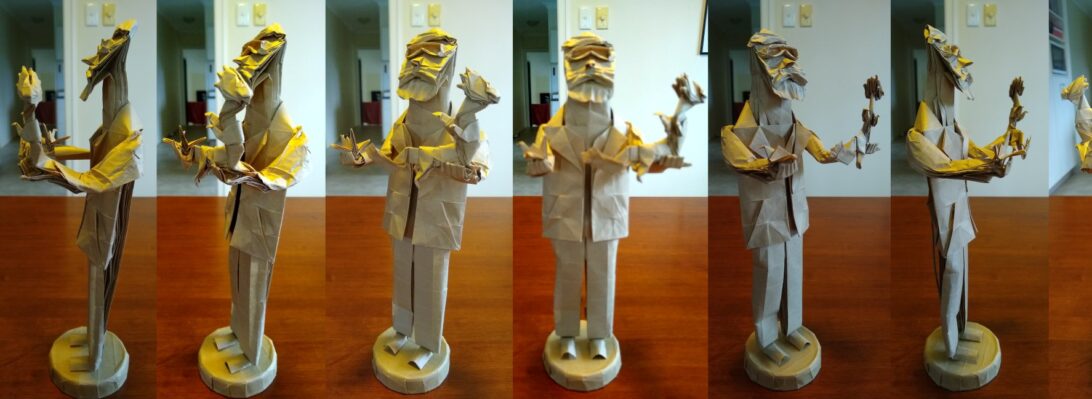My usual line “if you find interesting paper, get it and I will make you something out of it” has been the start of many fascinating journeys:

Peter and Majella travelled to Japan, and found some lovely paper – one, a sheet of hand-made natural Kozo with botanical inclusions screamed out for something delicate and textured. I had intended to return to Mikiller觅晨’s modular dragon, having already folded it large, I thought it might be interesting to fold it tiny and trap it in a shadowbox frame.






















